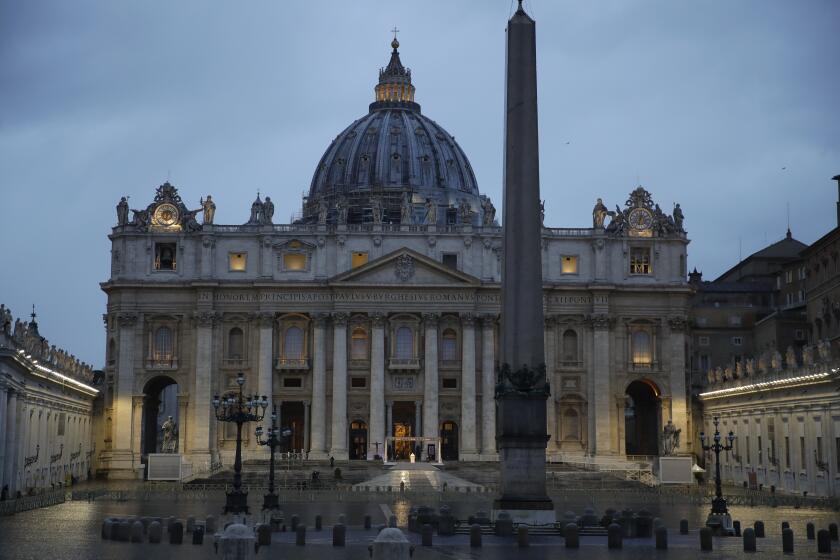As utilities go green, some are seeing red
In their push to go green, some of California’s utilities want more green from their customers.
For decades, California has been among the best at getting its citizens to use less energy, and the state’s largest utilities have been more than happy to take credit for the success of programs that do such things as pay rebates when customers buy power-sipping appliances.
But to meet ambitious targets to slash the state’s output of greenhouse gases, California and its utilities must now push energy efficiency like never before.
Southern California Edison Co., Pacific Gas & Electric Co., San Diego Gas & Electric Co. and Southern California Gas Co. have said they are ready to do their part -- but they want customers to hand them another $400 million to $1 billion in cash incentives. Extra rewards, on top of the incentives the utilities already get for administering the customer-funded power-saving programs, could add as much as $2.50 to the average ratepayer’s monthly bill.
“Audacity is a pretty good way to frame it,” California Energy Commission member John Geesman said of the companies’ pursuit of big energy-efficiency rewards. “It ought not to take bribes to get them to do that.”
Some consumer groups share Geesman’s view.
Even at $500 million, the utility rewards would be “a huge waste of money,” said Marcel Hawiger, staff attorney for the Utility Reform Network in San Francisco.
That money, he said, would be better spent in ways other than padding the profits on programs the utilities already administer. The funds would be enough, he calculated, to give every California household five energy-saving light bulbs or weatherize more than 300,000 low-income homes.
The utilities’ incentive request is backed by many energy regulators, the Natural Resource Defense Council and some groups that promote conservation. They believe that allowing utilities to profit from customer-funded efficiency programs is reasonable and essential given the urgency of making Californians use less power, which would reduce the greenhouse gases that electricity generation creates.
“It’s part of a package that we see as necessary to really promote and make sure that cost-effective efficiency is being pursued,” said Audrey Chang, an NRDC staff scientist. The goal is to make saving power more attractive to the utilities, she said, “so they’re putting their best resources, their best personnel, into energy efficiency.”
The debate is playing out in a little-noticed proceeding at the California Public Utilities Commission, where regulators are hammering out strategies crucial to the state’s quest to rein in the pollutants that have worsened global warming.
Under a landmark law enacted last year, California pledged to cut greenhouse gas emissions 25% by 2020. Using less energy is considered crucial to meeting the law’s aggressive goal because it is the cheapest, cleanest and least-disruptive route.
California’s wide-ranging energy efficiency programs target homeowners and businesses. They include adopting appliance and building standards that save power, eliminating wasteful practices, promoting efficient lighting and offering rebates to customers who install less power-hungry appliances such as refrigerators and air conditioners.
Those steps, plus the deterrent of high electricity prices, have helped California keep its per-capita power consumption relatively flat over the last 30 years, while the nationwide figure has grown by nearly 50%. Every year, the programs save more than 40,000 gigawatt-hours of electricity and 12,000 megawatts of peak power -- equal to 24 large power plants.
The turning point, experts say, was the state’s decision in the early 1980s to more than offset the lost revenue at utilities that sold less power to customers because of energy efficiency programs.
That crucial move, still a relative rarity in the United States, “took away the incentive, generally, for California companies to want to sell more power,” said Peter Darbee, chief executive of San Francisco-based PG&E; Corp., which owns Pacific Gas & Electric.
The efficiency achievements continue to save consumers and businesses money, but they aren’t free. Most of the money behind the state’s programs are paid for by customers, through the “public goods” charge on their energy bills. On each customer’s bill, the charge amounts to about 1%, of which nearly half goes to energy efficiency.
Utilities are partway through the state’s 2006-through-2008 efficiency program, which is expected to eliminate the need for three new power plants and reduce carbon dioxide emissions by more than 3 million tons per year by 2008, the equivalent of removing 650,000 cars from California roads.
The cost for ratepayers is $2 billion over those three years. The program is expected to decrease electric and gas bills by 2% by 2009, saving ratepayers $2.7 billion. But the cost figures don’t count the utility incentives now under discussion.
PUC President Michael Peevey, energy efficiency experts and utility executives say the challenges require a wholesale shift in focus at the state’s utilities. As a result, they say, energy efficiency endeavors should offer profit-making opportunities that are equivalent to the money companies earn by building power plants and selling the output.
“We’re definitely pushing the envelope very hard, and that requires extraordinary measures, and one of those is earnings ... for shareholders” from energy efficiency, said Mark Gaines, director of consumer programs at San Diego Gas & Electric Co. and SoCal Gas, subsidiaries of San Diego-based Sempra Energy. “The amount is certainly what the commission needs to decide on.”
Under SDG&E;’s plan, it and the other investor-owned utilities would be rewarded with a collective $403 million if they meet the state’s targets for 2006 through 2008, a figure that would rise to more than $1 billion if the group achieves 150% of the goals.
PG&E;’s plan calls for combined payments of $538 million for meeting the efficiency marks, and up to $686 million for exceeding the mark -- suggesting a possible profit of between 27% and 34% on the three-year $2-billion energy-efficiency budget.
The Utility Reform Network wants utility incentives to total $54 million for 100% success, rising to about $100 million if the companies exceed the targets.
The utilities didn’t specify how much the incentives would add to customer bills. But the Utility Reform Network estimated that $500 million in new rewards would swell the average customer’s monthly bill by $15 a year or $1.25 a month over three years. A $1-billion incentive boost would double the monthly cost.
Utility commission officials are expected to rule on the issue by the end of summer. The final plan probably also will include penalties for poor results.
“We should set the incentives a little rich, so that the utilities exceed your expectations, and then you can trim back, for the next phase,” said Darbee of PG&E.; “If you have them so low that the utilities don’t get excited about it, then you’ll have a program that
Consumer advocate Hawiger scoffs at that line of reasoning. “We’re not even asking them to foot the bill. We’re asking them to do the right things for a small fee rather than for a huge profit,” he said.
“Joe Q. Public should be outraged that the utilities are going around bragging about how green they are ... and at the same time, they’re asking for profits so that they will do what we’re already paying them to do, but better.”
elizabeth.douglass@latimes.com
More to Read
Get the L.A. Times Politics newsletter
Deeply reported insights into legislation, politics and policy from Sacramento, Washington and beyond. In your inbox three times per week.
You may occasionally receive promotional content from the Los Angeles Times.






